In a world where burnout affects 76% of employees according to the American Psychological Association’s 2024 Work and Well-being Survey, it’s no surprise that wellness travel has surged by an impressive 36% since 2019. This growth outpaces the overall tourism industry by nearly double, signaling a fundamental shift in how we approach vacations and time away.
Wellness travel encompasses far more than just luxurious spa treatments or yoga retreats. It represents a holistic approach to journeying that prioritizes mental, physical, emotional, and spiritual well-being. Today’s wellness travelers seek transformative experiences that provide lasting benefits long after they’ve returned home.
This article explores the seven most influential wellness tourism trends shaping the industry in 2025, from data-driven personalized programs to immersive nature therapies. From sleep-focused destinations to digital detox experiences, we’ll examine how the wellness travel landscape is evolving to meet our deepest needs for restoration and growth.
From tech-enabled personalization to forest bathing, mindfulness retreats to sleep tourism—let’s explore the transformative wellness getaways redefining how we travel for health and happiness in 2025.
Table of Contents
Trend 1: Personalized Wellness Retreats & Programs
The New Era of Tailored Wellness
The days of one-size-fits-all wellness programs are rapidly fading. Today’s wellness retreats are embracing sophisticated personalization, creating bespoke experiences tailored to individual health profiles, goals, and preferences. This shift represents one of the most significant developments in health and wellness travel this decade.
Advanced technologies now enhance these personalized journeys. Wearable devices track biometrics during your stay, while pre-arrival assessments—including genetic testing, microbiome analysis, and detailed health questionnaires—allow wellness practitioners to customize every aspect of your experience.
“The future of wellness travel lies in hyper-personalization. Today’s travelers don’t want generic programs—they want transformative experiences designed specifically for their unique bodies and minds.” — Dr. Maya Richards, Wellness Tourism Association
Leading the Personalization Revolution
Six Senses Resorts have pioneered this approach with their Wellness Screening program, which uses biomarker testing to create personalized nutrition, fitness, and treatment plans. Their properties in Thailand and Portugal offer DNA wellness testing that provides insights into how your body responds to different types of exercise, nutrition, and stress.
More travelers are embracing self-care travel as a way to recharge both mentally and physically.
Canyon Ranch in Arizona has developed proprietary algorithms that analyze more than 30 health metrics to create fully customized wellness itineraries. Their medical-grade assessments inform everything from meal plans to fitness recommendations and stress management techniques.
Kamalaya Wellness Sanctuary in Thailand offers personalized detox programs, combining Eastern and Western approaches based on individual health assessments, creating truly unique wellness vacations for each guest.
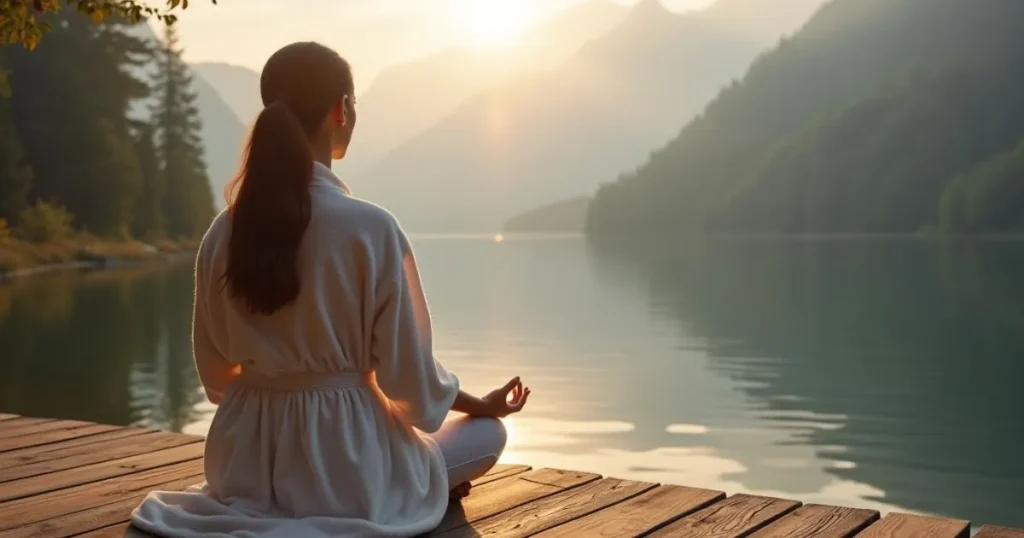
Trend 2: Nature-Based Wellness & Forest Bathing (Shinrin-Yoku)
Harnessing Nature’s Healing Power
Science continues to validate what many cultures have known for centuries: nature heals. Studies from the Environmental Health and Preventive Medicine journal demonstrate that forest environments significantly reduce cortisol levels, blood pressure, and heart rate while enhancing immune function—making nature-based practices a cornerstone of modern holistic travel.
Yoga travel combines movement, mindfulness, and stunning destinations for a truly transformative experience.
Forest bathing, or Shinrin-Yoku—the Japanese practice of mindfully immersing oneself in forest environments—has evolved from a niche activity to a mainstream wellness offering. The practice involves no exercise, goals, or devices—just quiet, mindful presence among trees.
Destinations Embracing Nature’s Therapy
Costa Rica’s Nayara Springs offers guided forest bathing sessions in the lush rainforest surrounding their property, where guests can experience biodiversity while practicing mindfulness among ancient trees.
L’Auberge de Sedona in Arizona conducts “forest bathing” sessions along Oak Creek, where the desert landscape provides a unique therapeutic environment different from traditional forest settings.
Japan’s Aman Kyoto offers authentic Shinrin-Yoku experiences led by local practitioners in the ancient forests surrounding the property, making it a premier destination for wellness getaways focused on nature connection.
Other nature-based wellness activities gaining popularity include:
- Ecotherapy programs combining conservation work with mindfulness
- Ocean and water-based therapies using the proven benefits of “blue spaces”
- Mountain wellness retreats utilizing high-altitude environments
- Desert healing experiences harnessing the stillness and stark beauty of arid landscapes
Trend 3: Mental & Emotional Well-being Focus
Prioritizing Psychological Health
Mental wellness has moved from the periphery to the center of health and wellness travel. According to the Global Wellness Institute, mental wellness tourism now represents a $131 billion market segment, with dedicated mental health retreats growing at 21% annually—faster than any other wellness travel category.
This surge reflects broader societal recognition of mental health importance, with travelers specifically seeking destinations and programs addressing stress, burnout, anxiety, grief, and emotional balance.
Spa travel continues to grow as people seek deeper relaxation and rejuvenation during their vacations.
Destinations for Mental Restoration
The Ranch Malibu has developed their “Mental Reset” program, combining cognitive behavioral techniques with physical activity, nutrition, and meditation to address burnout and anxiety.
Miraval Resorts across the US offer specialized emotional fitness programs, including grief recovery workshops, mindfulness-based stress reduction, and emotional awareness retreats—exemplifying the evolution of mindful travel.
Kamalaya Koh Samui in Thailand provides their “Emotional Balance” program, integrating traditional Eastern practices with modern psychological approaches to address stress, grief, and life transitions.
| Mental Wellness Offerings | Benefits | Where to Find |
|---|---|---|
| Mindfulness Meditation Retreats | Reduced anxiety and stress, improved focus | Esalen Institute (California), Spirit Rock (California) |
| Emotional Intelligence Workshops | Better relationships, emotional regulation | Miraval Arizona, 1440 Multiversity |
| Burnout Recovery Programs | Restored energy, renewed purpose | The Ranch Malibu, Sha Wellness Clinic (Spain) |
| Grief Processing Retreats | Processing loss, finding meaning | Omega Institute (New York), Breitenbush (Oregon) |
| Trauma-Sensitive Programs | Healing and integration | The Hoffman Process (global locations) |
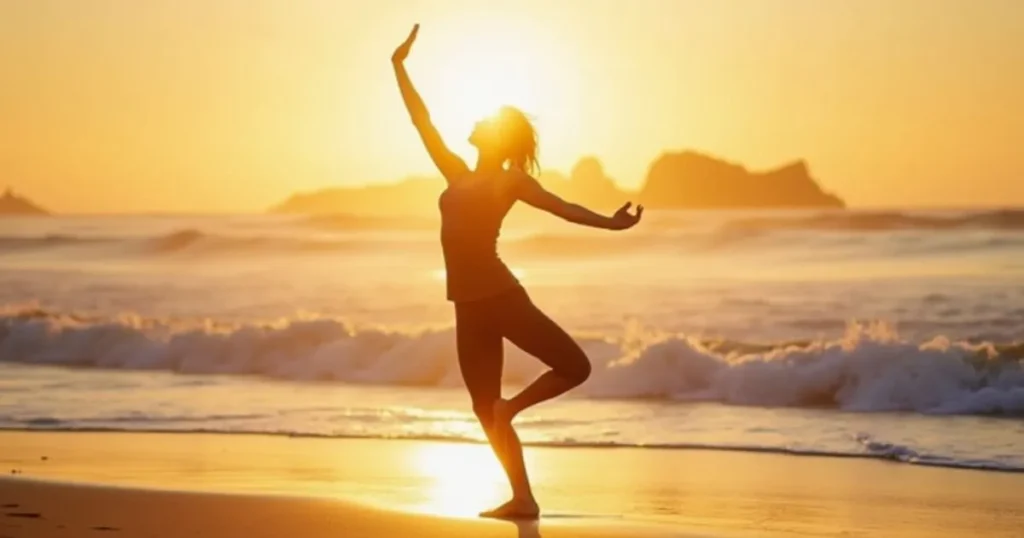
Trend 4: Integrative Wellness & Holistic Travel
Bridging Ancient Wisdom & Modern Science
Integrative wellness—combining evidence-based conventional medicine with complementary therapies—has become the gold standard in wellness tourism. This approach acknowledges that optimal health requires addressing the entire person: body, mind, spirit, and community.
Holistic travel experiences now seamlessly blend Western medical diagnostics with traditional practices from around the world. Advanced health screenings might be followed by acupuncture, sound healing, or indigenous plant medicine ceremonies—creating comprehensive healing journeys that respect both science and traditional wisdom.
Integration in Action
SHA Wellness Clinic in Spain exemplifies this approach, combining state-of-the-art medical diagnostics with Traditional Chinese Medicine, nutrition therapy, and cognitive approaches—making it a leader in integrative wellness vacations.
Ananda in the Himalayas blends Ayurvedic treatments with modern fitness approaches and nutritional science, creating programs that honor ancient healing systems while incorporating contemporary knowledge.
Chiva-Som in Thailand offers over 200 treatments spanning Western and Eastern modalities, with personalized programs integrating medical consultations, naturopathy, physical therapy, and traditional Thai healing arts.
The most popular integrative wellness approaches include:
- Medical Wellness: Combining preventive medical testing with natural therapies
- Eastern-Western Fusion: Integrating traditional healing systems with contemporary approaches
- Mind-Body Programs: Addressing the connection between psychological and physical health
- Ancient Healing Systems: Exploring traditional modalities like Ayurveda, TCM, and indigenous practices
- Energy Medicine: Incorporating modalities like Reiki, acupuncture, and sound healing
Trend 5: The Rise of Sleep Tourism
The New Frontier of Restoration
Sleep has emerged as perhaps the most critical wellness frontier, with dedicated sleep tourism growing 58% year-over-year. As research continues to highlight sleep’s fundamental role in physical health, mental clarity, emotional regulation, and disease prevention, travelers are specifically seeking destinations and programs dedicated to improving rest.
Sleep tourism goes far beyond luxurious bedding, encompassing comprehensive approaches to restorative rest including circadian rhythm retraining, sleep diagnostics, environment optimization, and addressing root causes of sleep disturbances.
Leaders in Sleep Wellness
Six Senses Hotels have pioneered sleep programs with their “Sleep With Six Senses” initiative, featuring handmade mattresses, moisture-wicking linens, and in-room humidity and temperature control, along with sleep tracking and coaching.
Rosewood Hotels & Resorts partnered with Bryte to offer special “restorative beds” that adjust throughout the night based on your sleep patterns, while their Asaya wellness concept includes sleep-focused treatments and coaching.
The Benjamin in New York offers their renowned “Rest & Renew” program featuring a sleep concierge, custom pillow menu, on-demand meditation, and even lullaby sound libraries—embodying the growing focus on sleep within wellness retreats.
The most innovative sleep tourism offerings include:
- Sleep diagnostic testing with follow-up treatment plans
- Circadian rhythm optimization programs
- Digital detox protocols specifically designed for better sleep
- Sleep-focused architectural design (soundproofing, blackout capabilities, air filtration)
- Nutritional approaches to improved sleep quality
- Stress reduction techniques specifically targeting insomnia
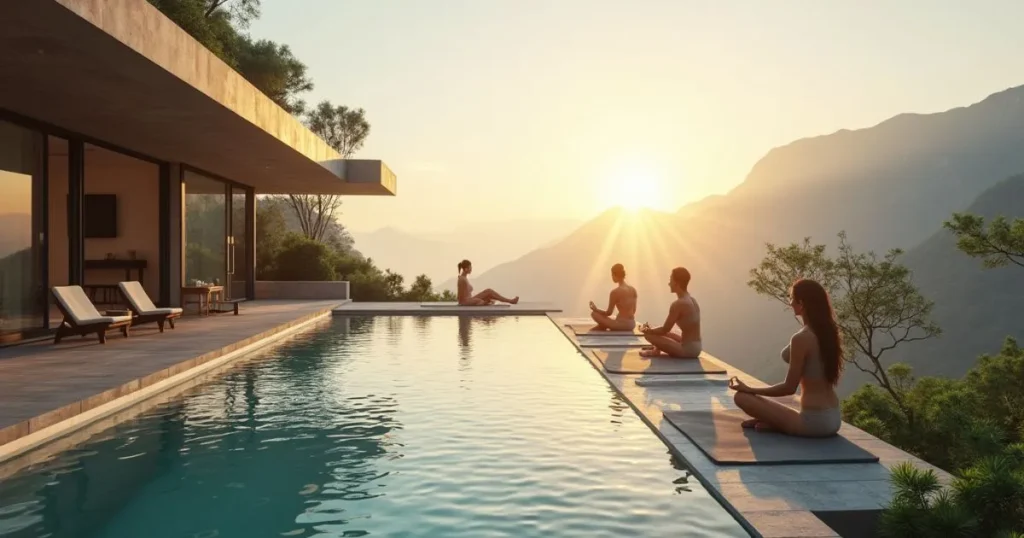
Trend 6: Wellness Vacations for All Ages & Life Stages
Democratizing Wellness Across Generations
Wellness travel has expanded beyond its traditional demographic of affluent middle-aged women to embrace travelers of all ages, family configurations, and life stages. Multi-generational wellness trips have increased 38% since 2022, reflecting the desire for shared healthy experiences across family units.
This democratization includes specialized programs addressing the unique needs of different life phases—from prenatal and postpartum retreats to family wellness experiences, couples’ programs, and active aging initiatives for seniors.
Age-Specific Wellness Destinations
Grand Velas Riviera Maya offers their “SE Spa for Kids” program, introducing children to wellness concepts through kid-friendly treatments, mindfulness activities, and yoga classes specifically designed for younger practitioners.
Canyon Ranch provides specialized programming for active seniors, focusing on mobility, cognitive health, and community—reshaping how older adults experience wellness getaways.
Miraval Austin has developed “Couples Wellness Journeys” focusing on relationship health alongside individual wellbeing, recognizing partnership as a key component of overall wellness.
| Life Stage | Wellness Focus | Popular Destinations |
|---|---|---|
| Families | Nature connection, screen-time balance, healthy eating | Grand Velas Resorts, Club Med, Beaches Resorts |
| Couples | Relationship wellness, shared experiences | Miraval Resorts, Four Seasons, Secrets Resorts |
| Solo Travelers | Self-discovery, community | Skyros (Greece), The Ranch Malibu, Sanctuary on Camelback |
| Seniors | Active aging, community, mobility | Canyon Ranch, Rancho La Puerta, Pritikin Longevity Center |
| Prenatal/Postpartum | Gentle movement, nutrition, connection | Golden Door, Carillon Miami, Como Shambhala |
This inclusivity reflects a broader recognition that wellness isn’t a luxury but a necessity for all demographics, making wellness vacations increasingly accessible across age groups and budgets.
Trend 7: Digital Detox & Tech-Free Travel
Reclaiming Presence in a Hyperconnected World
As digital saturation continues to impact mental health, focus, and relationships, tech-free travel experiences have seen a 67% increase in demand. What began as a niche offering has evolved into a substantial market segment, with properties around the world helping guests disconnect from devices and reconnect with themselves and their surroundings.
The most effective digital detox programs don’t just remove technology—they replace screen time with meaningful alternatives that enhance presence, creativity, and connection. This represents a key evolution in mindful travel.
Leading the Disconnection Movement
Eremito in Italy offers a monastic-inspired experience with no Wi-Fi, limited electricity, and solo accommodations that facilitate deep introspection without digital distractions.
Villa Stephanie in Germany provides rooms with copper-lined walls that block all wireless signals, creating havens of complete digital silence for guests seeking genuine disconnection.
Playa Viva in Mexico combines sustainability with digital minimalism, offering electricity-free beachfront treehouses where guests replace screen time with nature immersion and community connection.
The most effective digital detox experiences include:
- Device-free zones and times: Creating physical and temporal spaces free of technology
- Nature immersion: Using natural environments to facilitate disconnection
- Mindfulness practices: Teaching tools to counter digital distraction habits
- Creative activities: Offering artistic pursuits that engage different cognitive pathways
- Facilitated connection: Providing structured opportunities for authentic human interaction
These experiences exemplify how holistic travel can address the unique wellness challenges of our digital age, helping travelers reset their relationship with technology while developing healthier habits they can maintain after returning home.
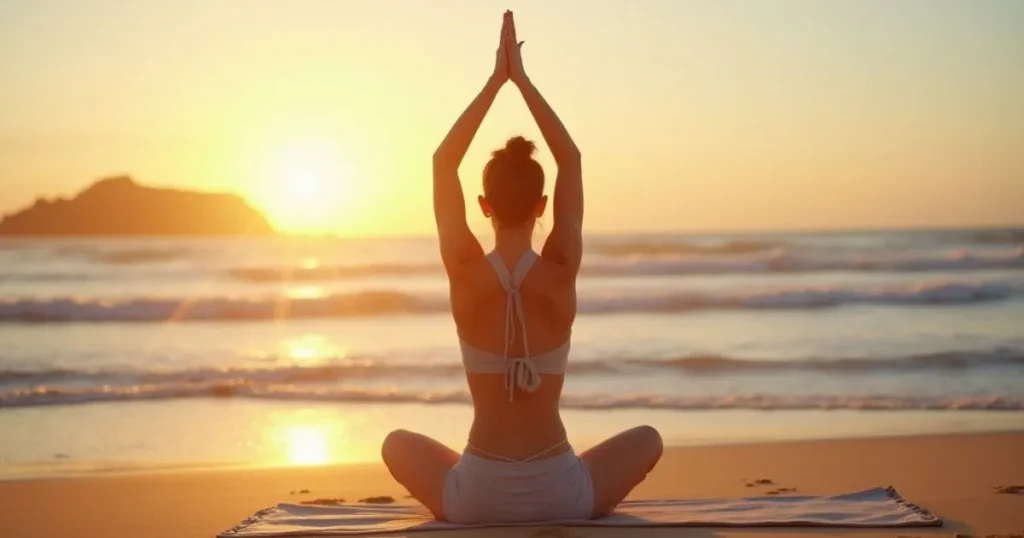
Related Travel Reads to Inspire Your Wellness Journey
- Essential Gear for Adventure Travel – perfect for active wellness escapes.
- How to Pack for Wellness-Focused Adventures – travel light and mindfully.
- Off-Grid Power Solutions for Nature Retreats – ideal for digital detoxes.
- Wellness Travel for Solo Explorers in Mexico – a calming, cultural experience.
- Mindful Moments in Kyoto’s Top Temples – spiritual wellness and peace.
- Is Japan Safe for Solo Female Wellness Travel?
- Discover Inner Joy with Hidden Gems in Paris
- Why Santorini is a Dream Wellness Travel Destination
- Plan a Long-Term Wellness Travel Experience on a Budget
- Top Cities for Solo Wellness Travel – where solitude meets soul-nourishment.
Conclusion
As we move further into 2025, these seven wellness travel trends reflect our deepening understanding of what true well-being requires in modern life. From personalized programs leveraging cutting-edge technology to ancient practices like forest bathing, sleep optimization to digital detoxification, the wellness travel landscape continues to evolve in response to our most essential needs.
What unites these diverse approaches is their focus on sustainable transformation rather than temporary escape. The most powerful wellness travel experiences provide not just in-the-moment rejuvenation but tools, practices, and insights that participants can integrate into their daily lives.
As you consider your own wellness getaways this year, reflect on which of these trends might address your unique needs. Whether you’re seeking mental restoration through mindfulness, physical rebalancing through personalized programs, or simply better sleep in an optimized environment, there’s never been a better time to prioritize your well-being through intentional travel.
The wellness journey, after all, isn’t about reaching a fixed destination—it’s about cultivating awareness, balance, and vitality wherever you go. As you explore these emerging trends, may your travels nurture not just where you are, but who you’re becoming.
What wellness travel experience are you most drawn to in 2025? Share your thoughts in the comments below!

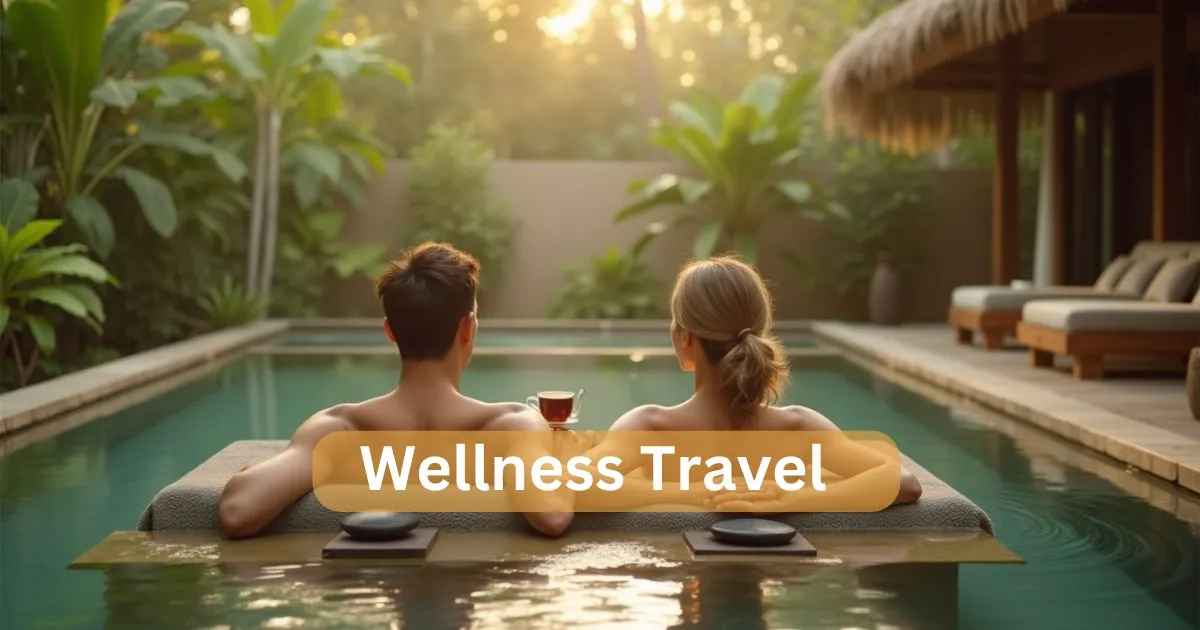
Wellness travel has honestly been a game-changer for me. I used to come back from trips feeling more exhausted than when I left, but once I started choosing experiences that focused on rest, movement, and self-care, everything shifted. Writing this post brought back memories of quiet mornings doing yoga by the ocean and the calm that comes from unplugging in nature. I really hope this inspires you to carve out space for yourself on your next adventure. If you’ve had a similar experience, I’d love to hear your story.